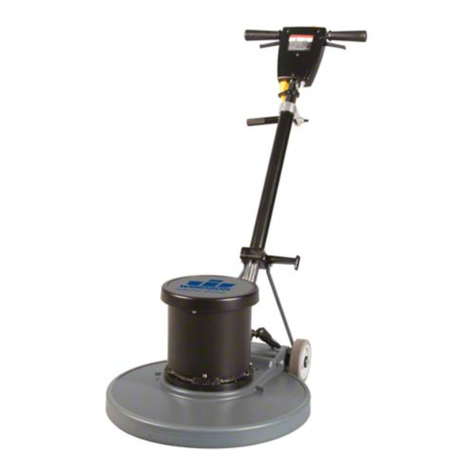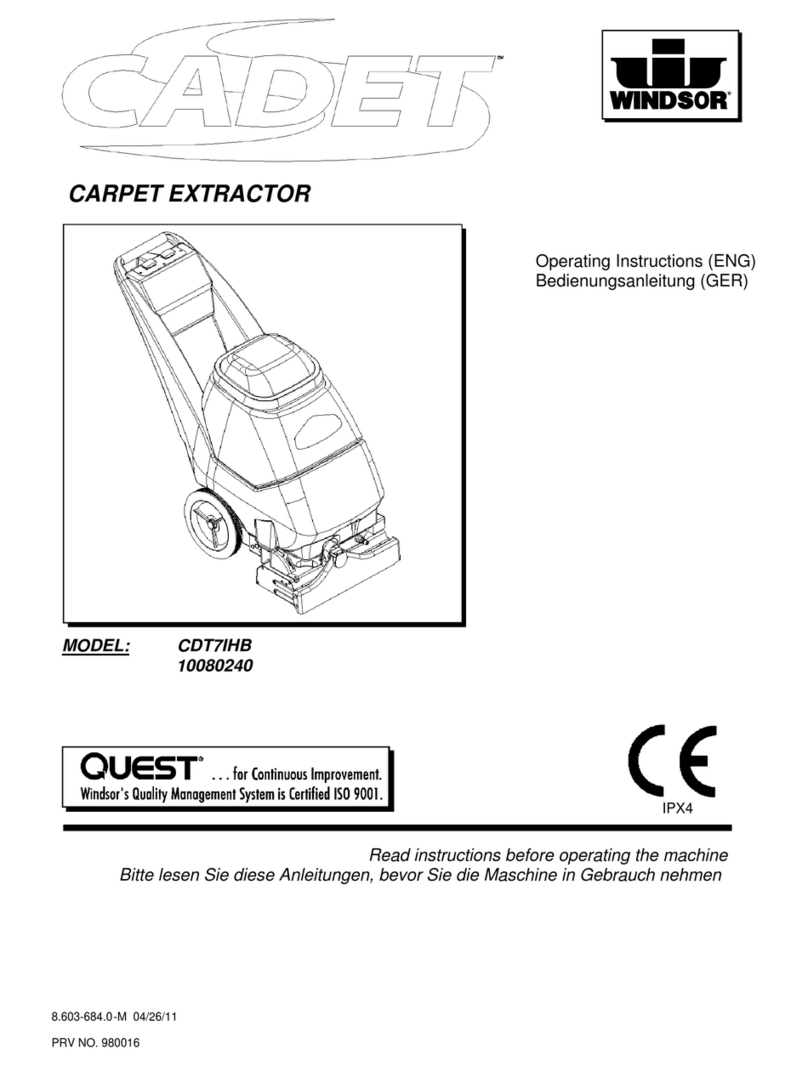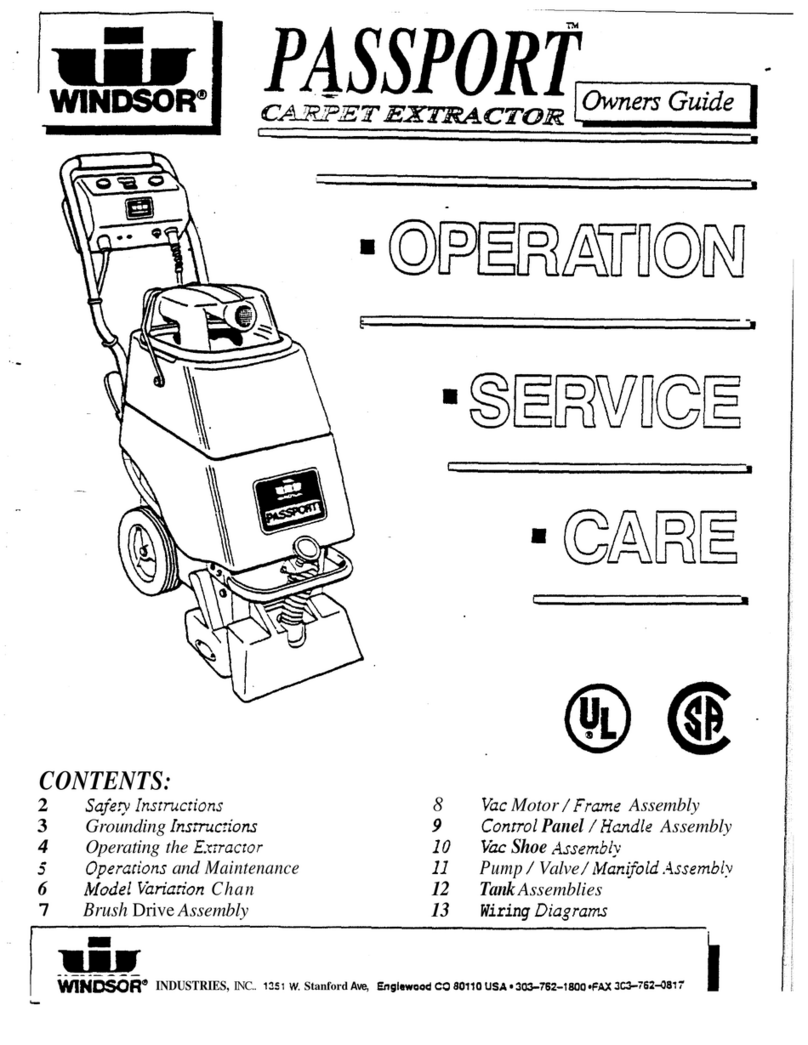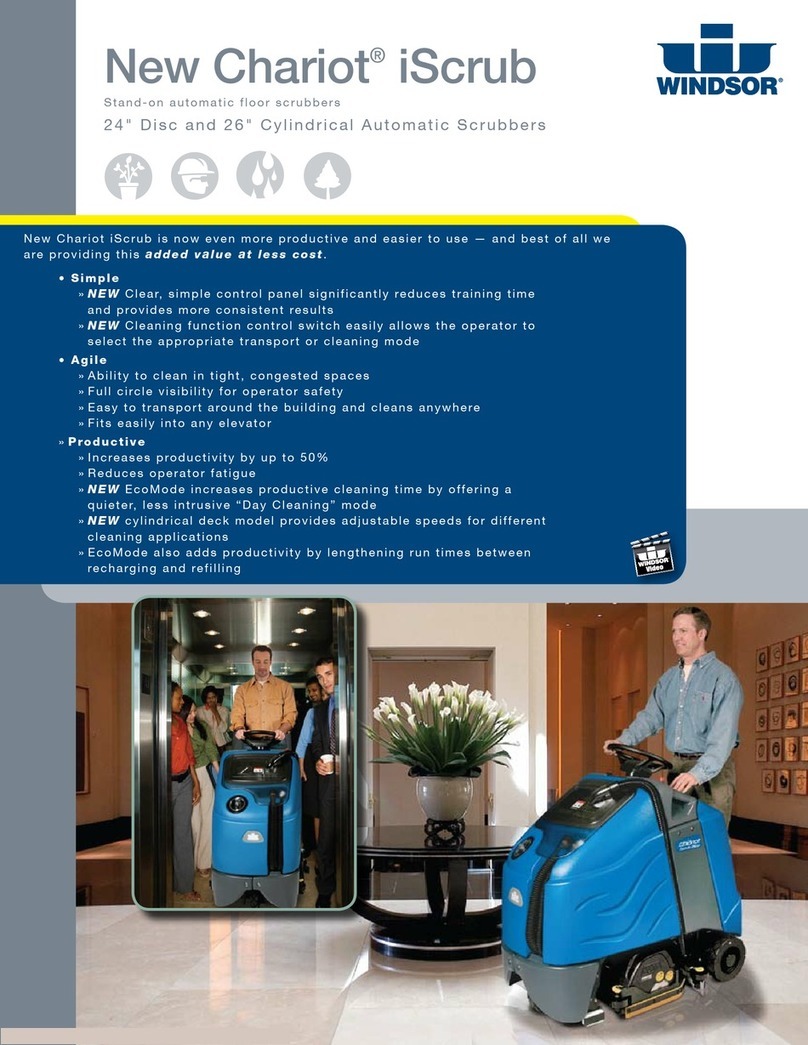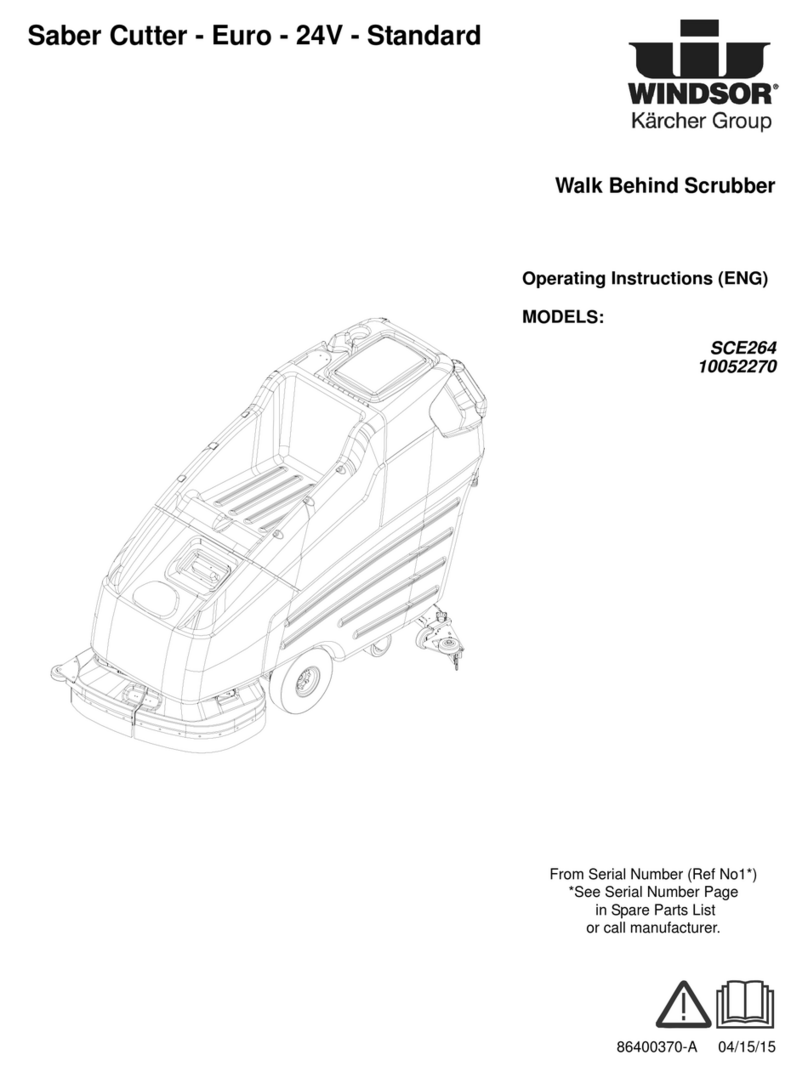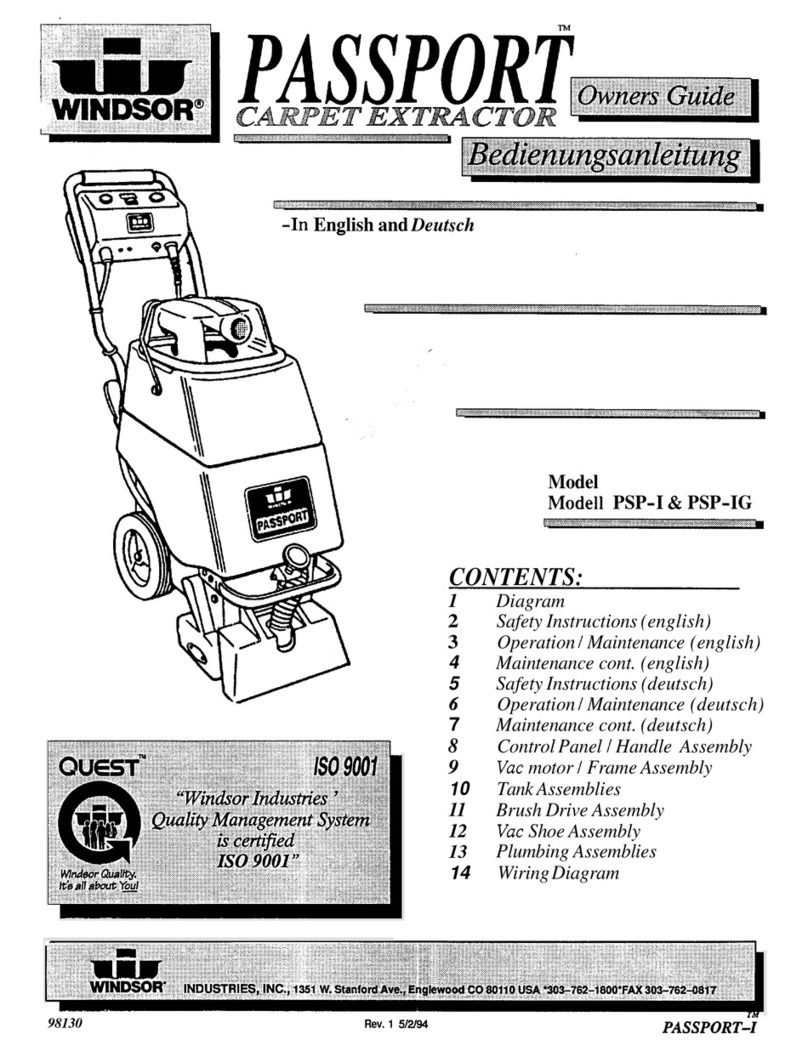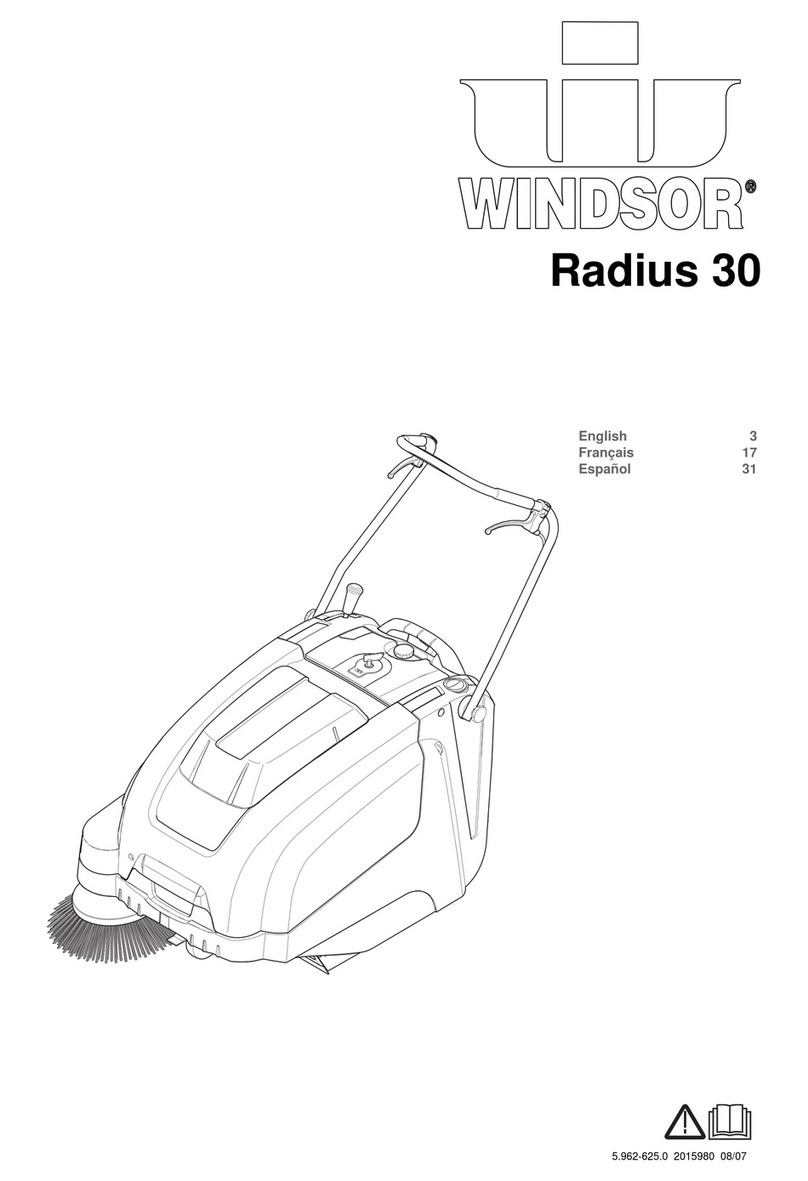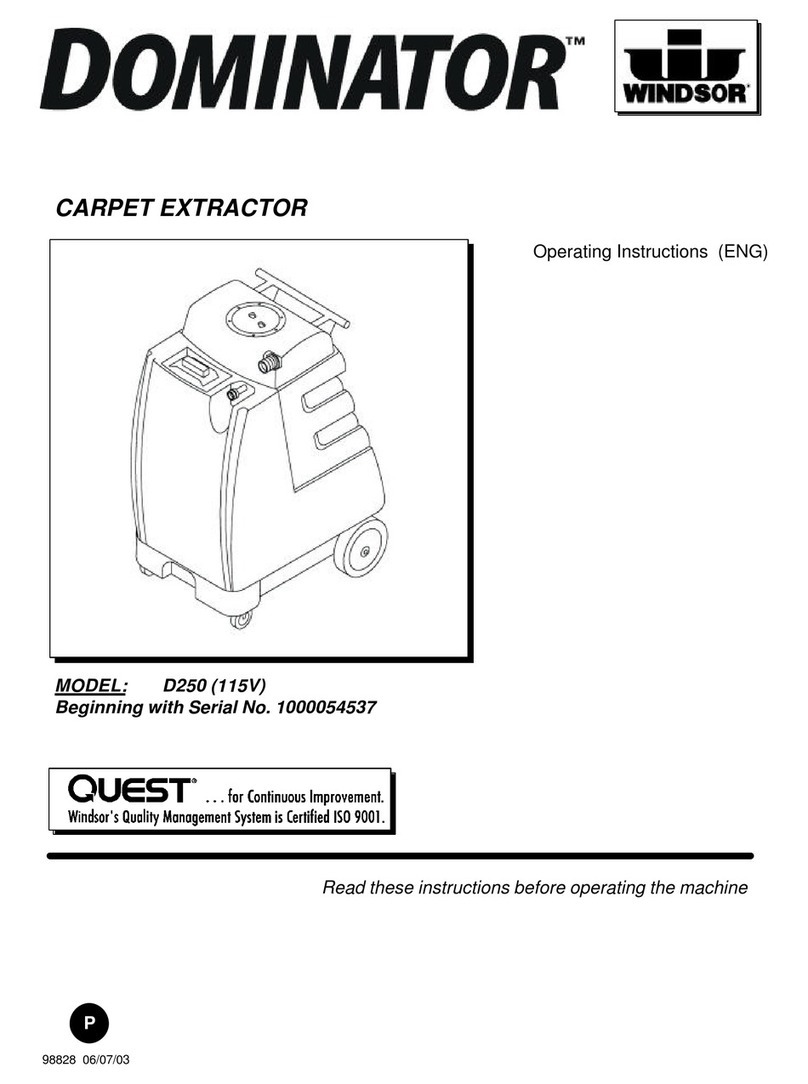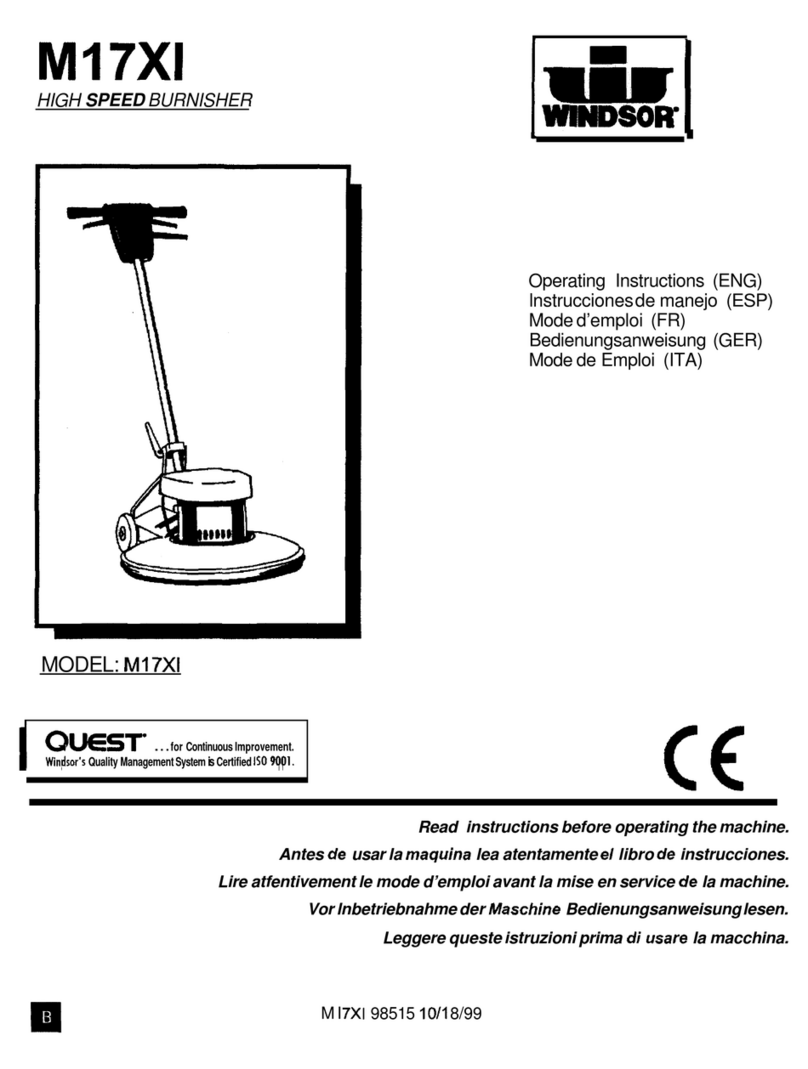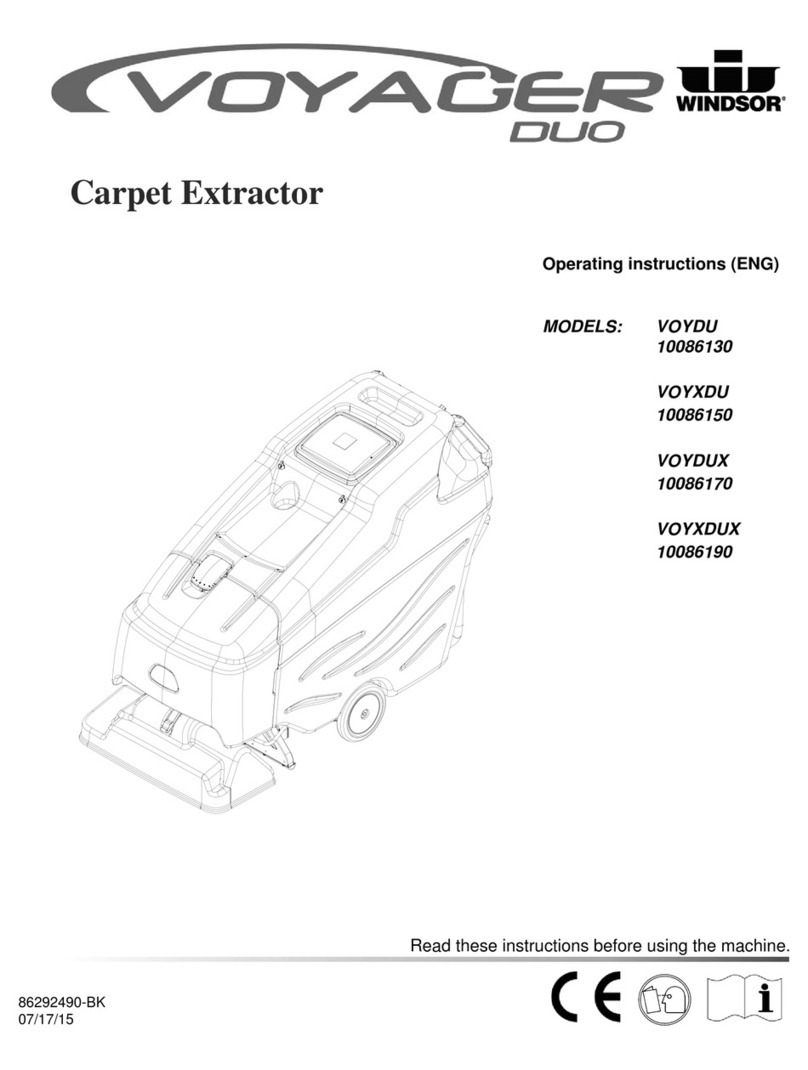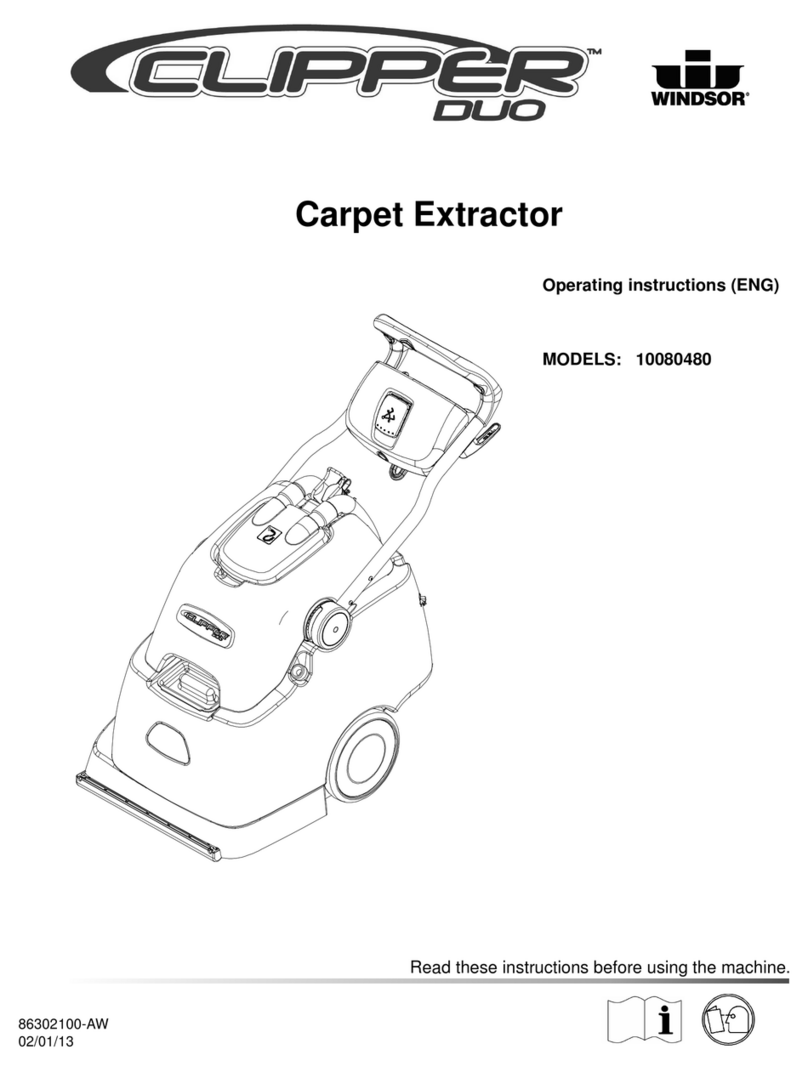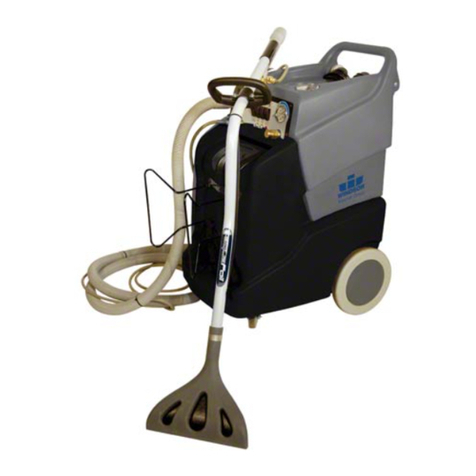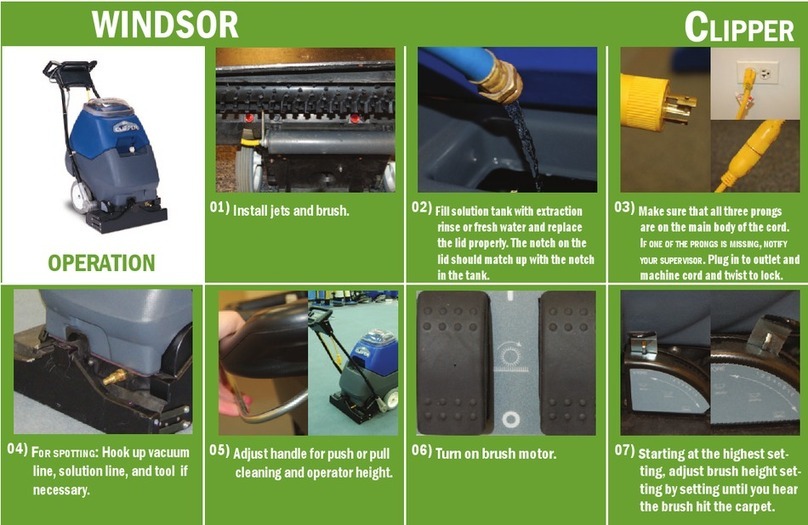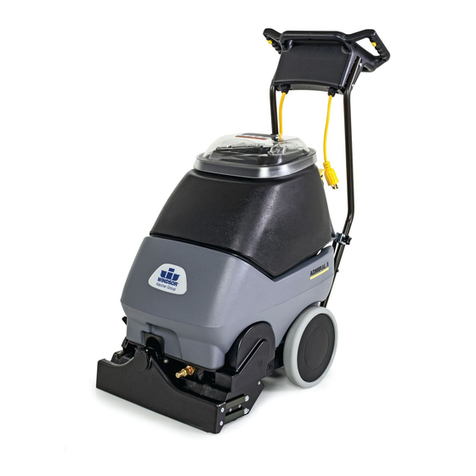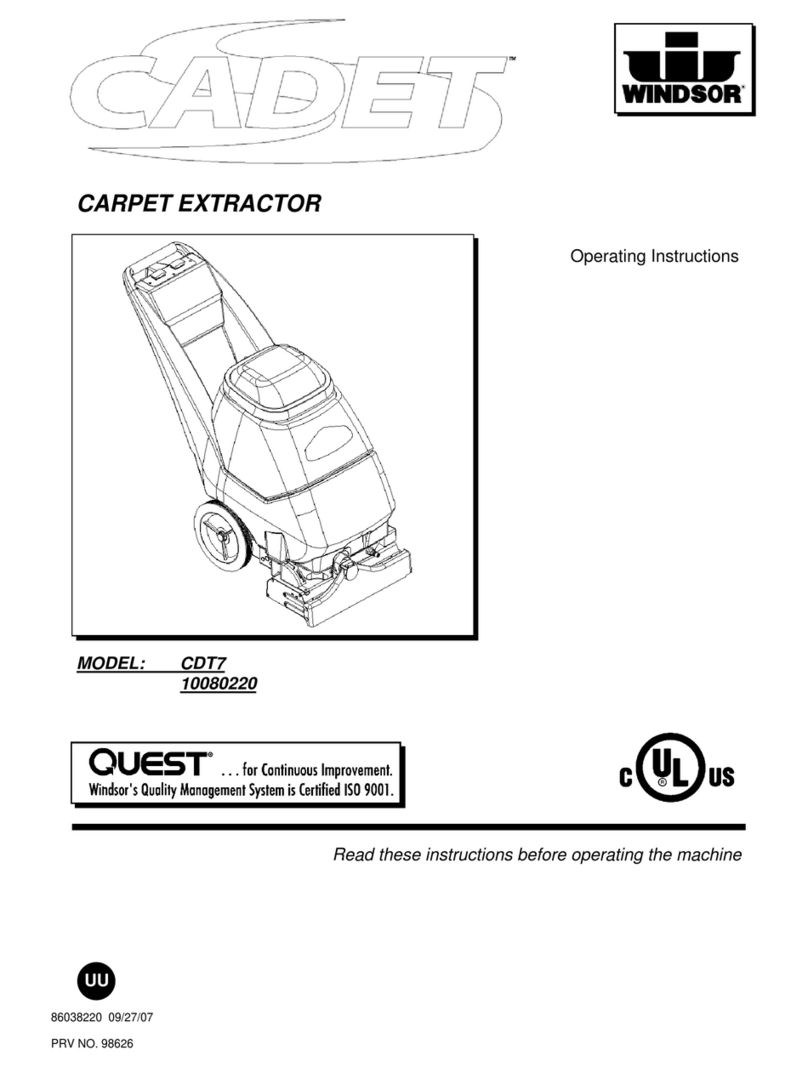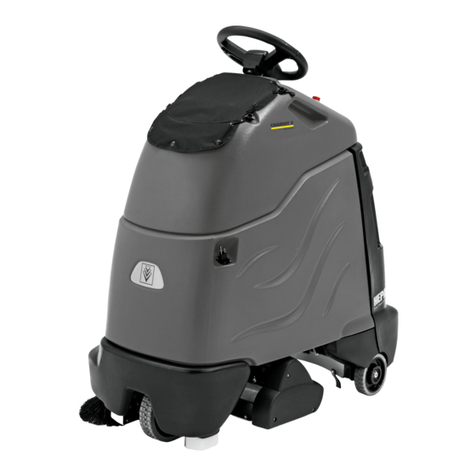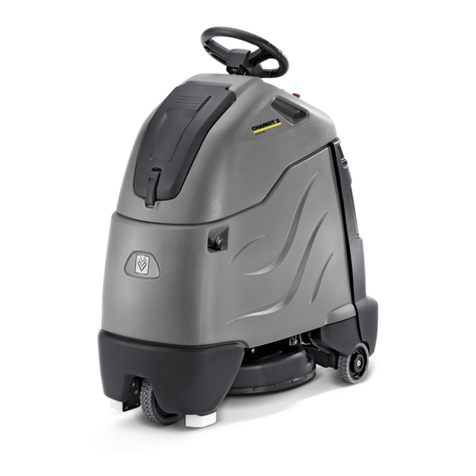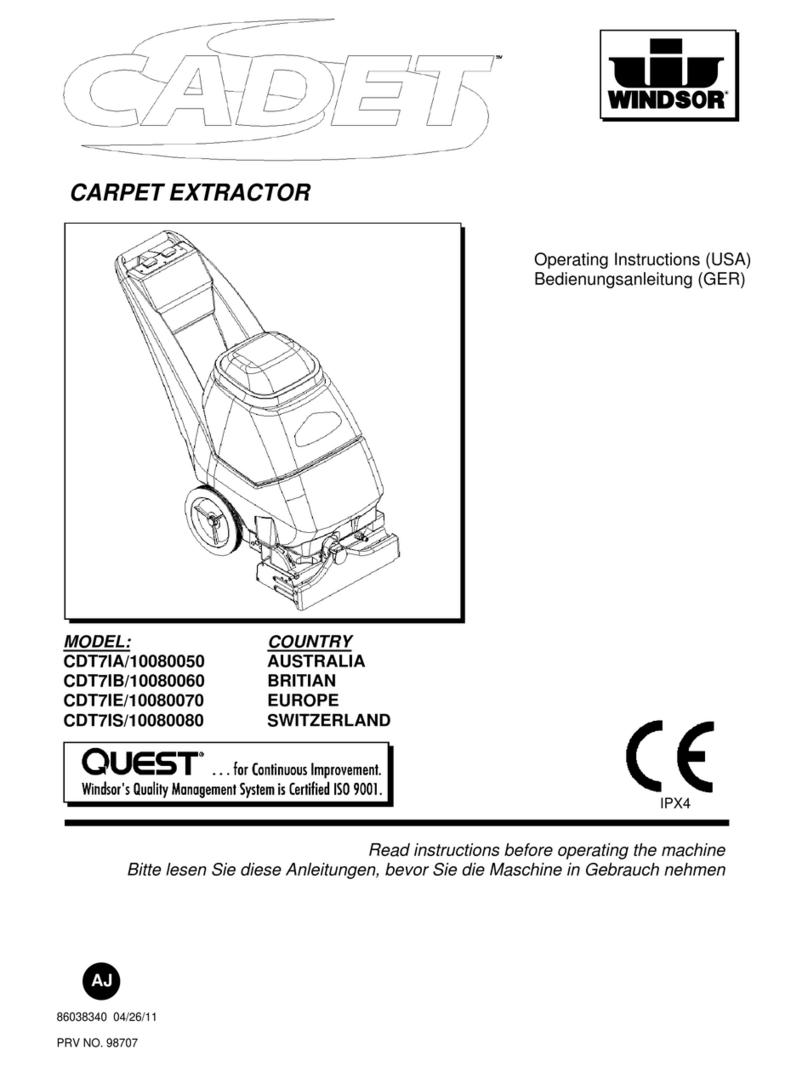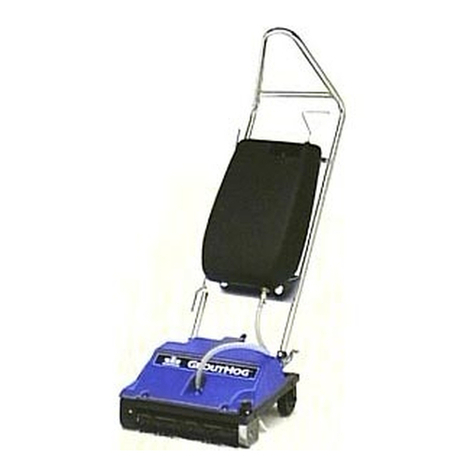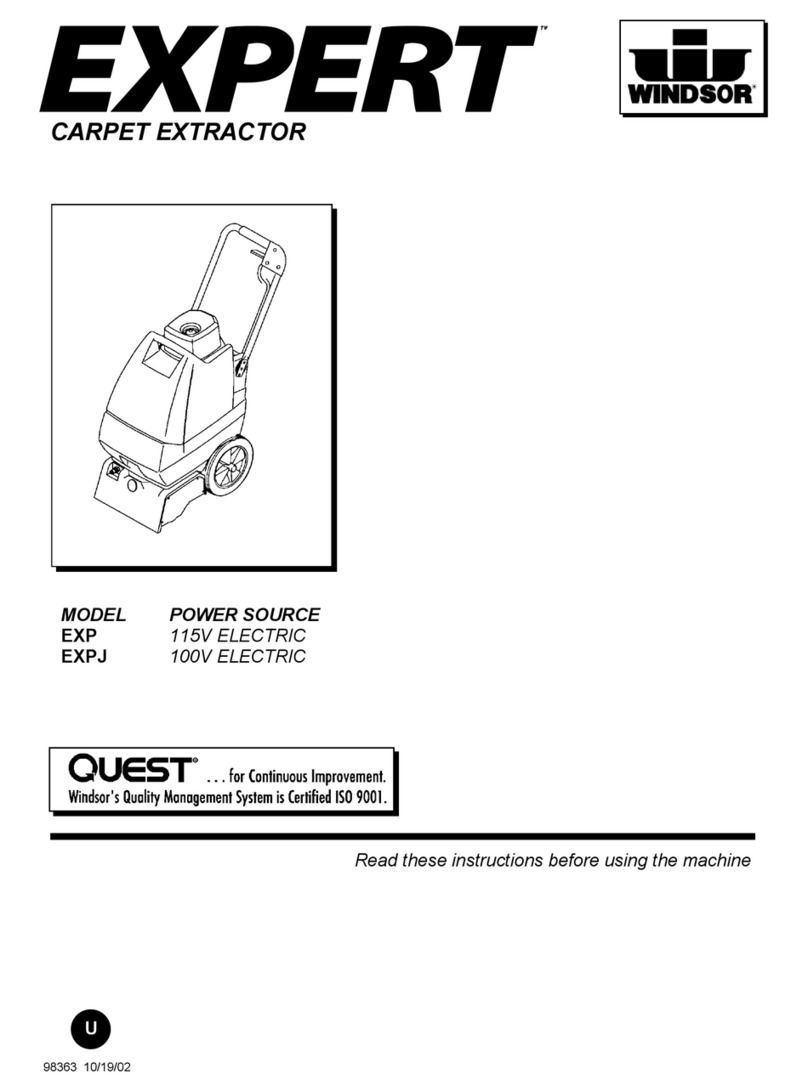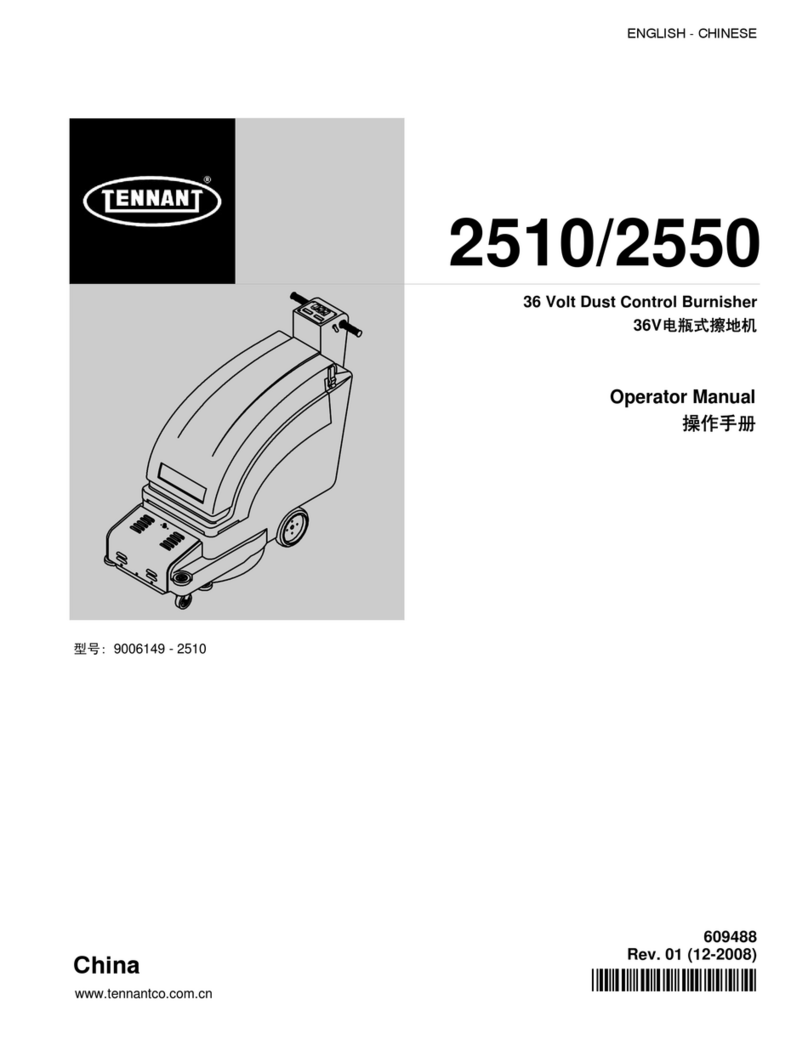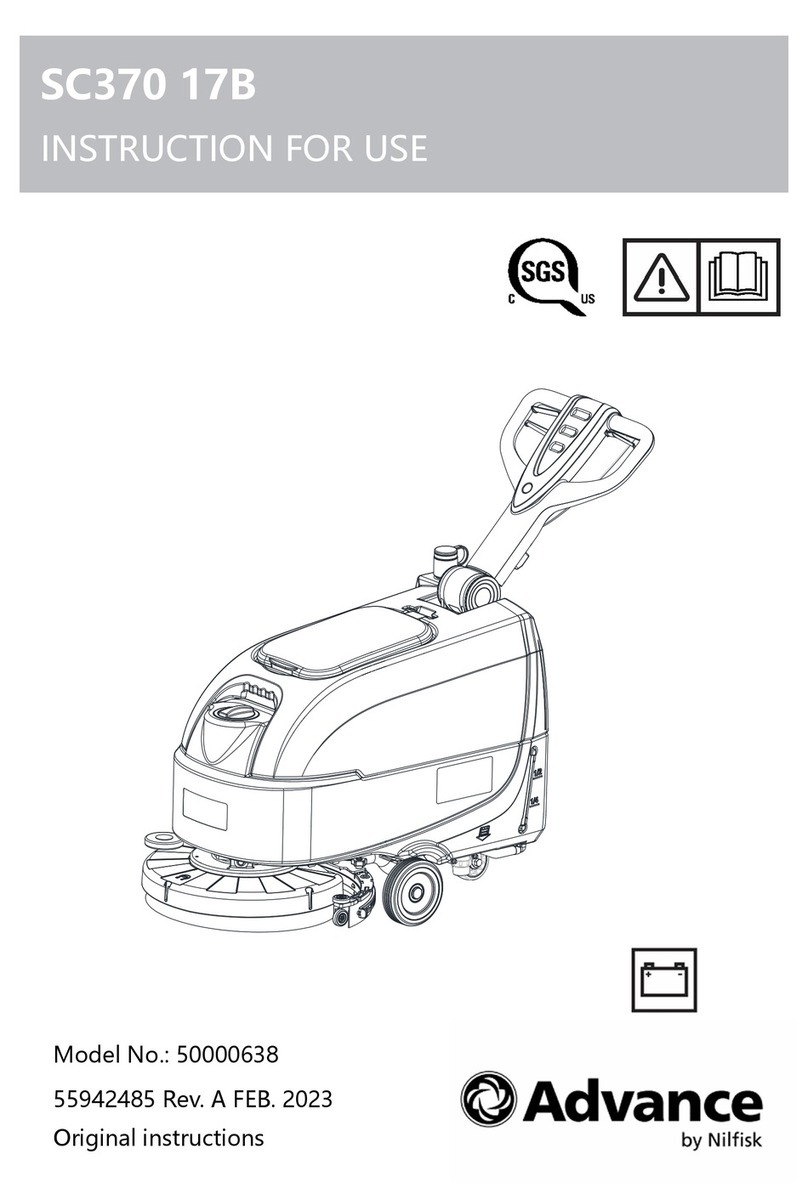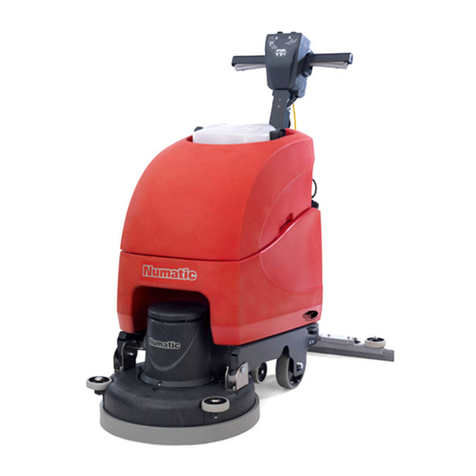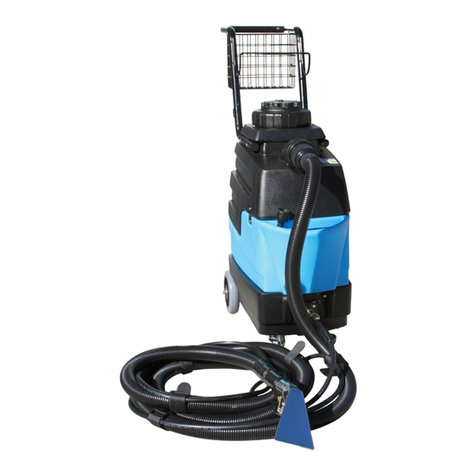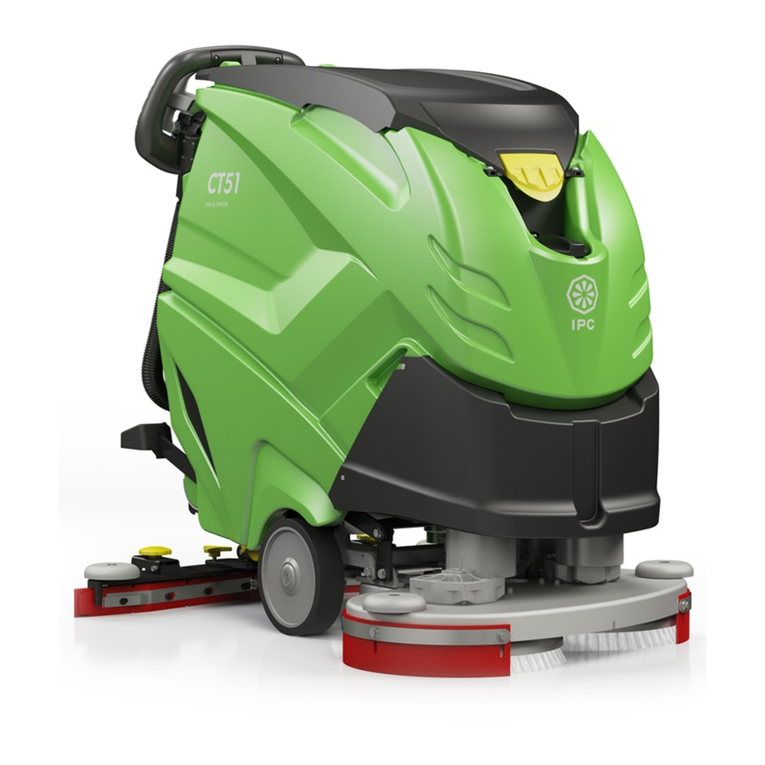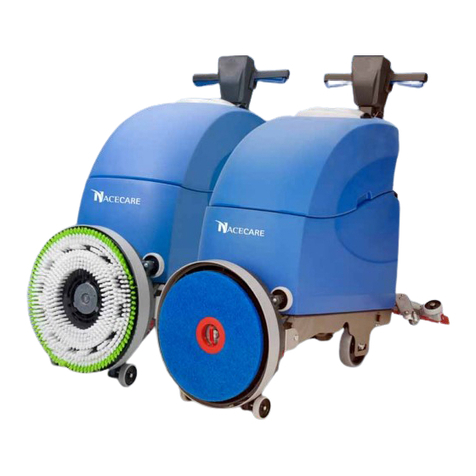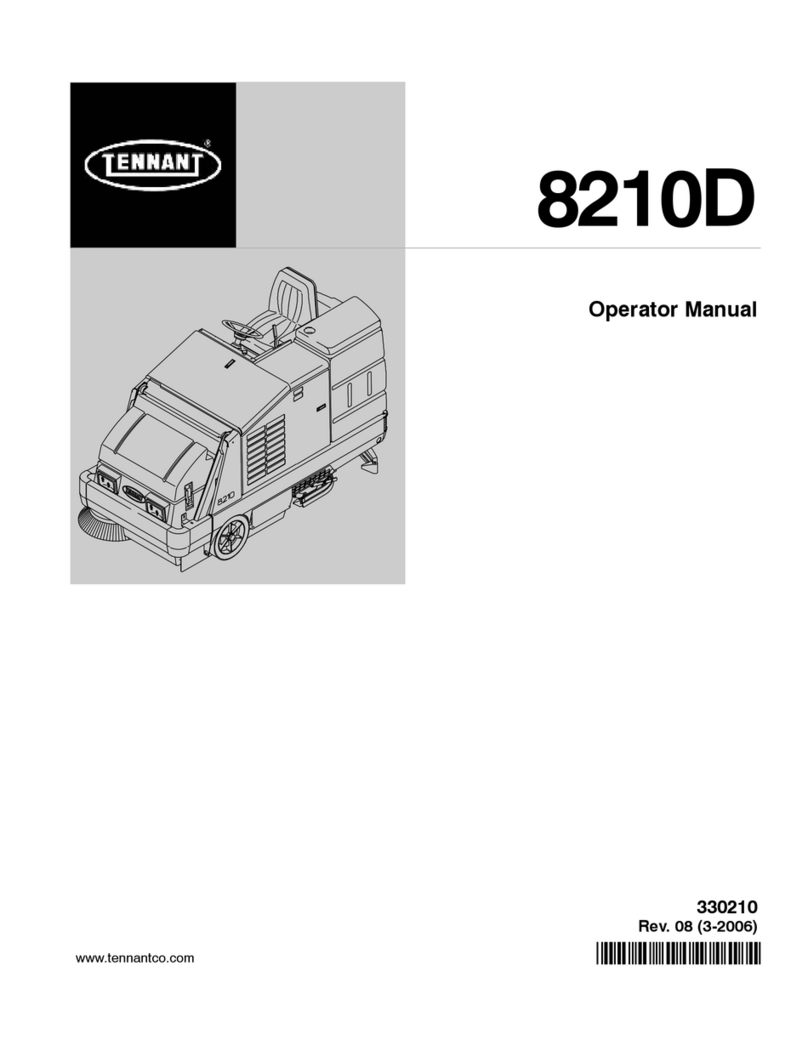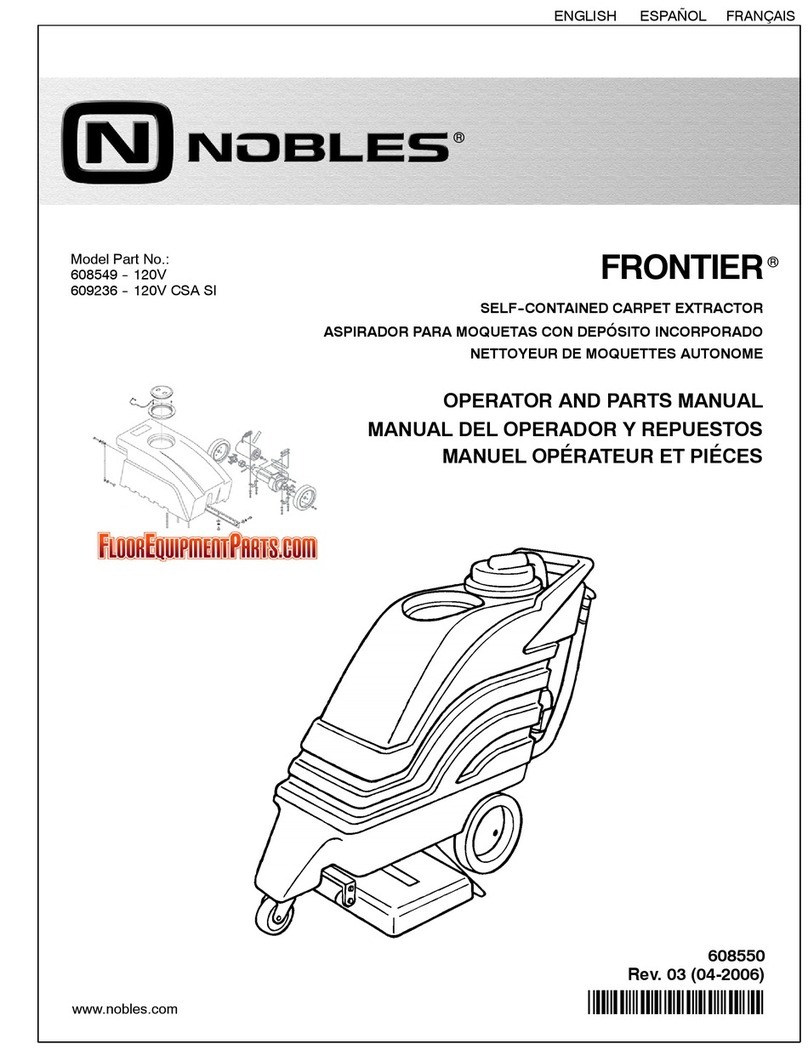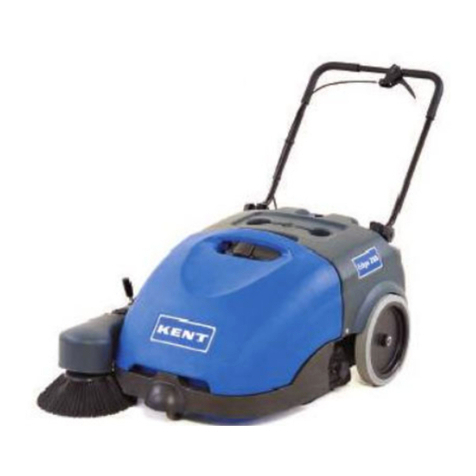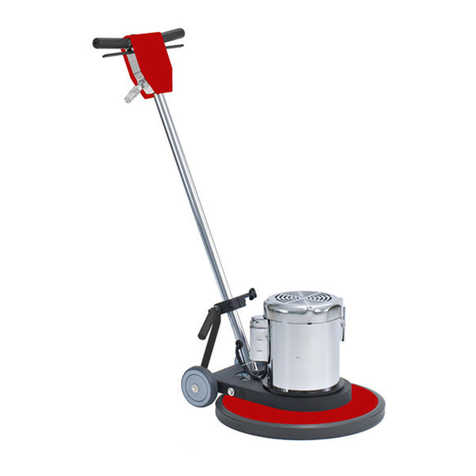
- 2
–A powered unit is unattended when the
operator is more than 25 ft (7.6 m) from
the unit, which remains in his view, or
whenever the operator leaves the unit
and it is not in his view.
Before leaving the operator’s position:
A bring the unit to a complete stop;
B place the directional controls in neutral;
C apply the parking brake;
In addition, when leaving the unit unattend-
ed:
A stop the engine or turn off the controls;
B if the unit must be on an incline, block
the wheels.
–Maintain a safe distance from the edge
of ramps, platforms, and other similar
working surfaces.
–When powered units are driven on and
off highway trucks or trailers, the brakes
on the highway trucks or trailers shall
be applied and wheel chocks or other
positive mechanical means shall be
used to prevent unintentional move-
ment of highway trucks and trailers.
–When powered units are driven on and
off semitrailers that are not coupled to a
tractor, supports may be needed to pre-
vent upending or corner dipping.
–Care shall be taken not to contact over-
head installations such as lights, wiring,
pipes, sprinkler systems, etc.
–Report all accidents involving person-
nel, building structures, and equipment
to the supervisor or as directed.
–Do not add to, or modify the unit.
–Do not block access to fire aisles, stair-
ways or fire equipment.
–Observe all traffic regulations including
authorized plant speed limits. Under
normal traffic conditions, keep to the
right. Maintain a safe distance, based
on speed of travel, from the unit ahead;
keep the unit under control all times.
–Yield the right of way to pedestrians and
emergency vehicles such as ambulanc-
es and fire trucks.
–Do not pass another unit traveling in the
same direction at intersections, blind
spots, or at other dangerous locations.
–Slow down and sound the audible warn-
ing device(s) at cross aisles and other
locations where vision is obstructed.
–Cross railroad tracks at an angle wher-
ever possible. Do not park closer than 6
ft (1800 mm) to the nearest rail of a rail-
road track.
–Keep a clear view of the path of travel
and observe for other traffic, personnel,
and safe clearances.
–Ascend or descend grades slowly, and
with caution. Avoid turning, if possible,
and use extreme caution on grades,
ramps, or inclines; normally travel
straight up and down.
–Under all travel conditions, operate the
unit at a speed that will permit it to be
brought to a stop in a safe manner.
–Make starts, stops, turns, or direction
reversals in a smooth manner so as not
shift load and/or overturn the unit.
–Do not indulge in stunt driving or horse-
play.
–Slow down for wet and slippery floors.
–Before driving over a dockboard or
bridge plate, be sure that it is properly
secured. Drive carefully and slowly
across the dockboard or bridge plate,
and never exceed its rated capacity.
–Do not drive units onto any elevator un-
less specially authorized to do so. Do
not exceed the capacity of the elevator.
Approach elevators slowly, and then
enter squarely after the elevator car is
properly leveled. Once on the elevator,
neutralize the controls, shut off power,
and set brakes. It is advisable that all
other personnel leave the elevator be-
fore the unit is allowed to enter or leave.
–When negotiating turns, reduce speed
to a safe level consistent with the oper-
ating environment. Make the turns
smoothly.
The operation of a counterbalanced, center
control, high lift unit with a sit-down, nonel-
evating operator requires special safety
considerations, as follows:
A An unit may tip over if an operator fails
to slow down to a safe speed before
making turns. Indications that an unit is
being driven at an excessive speed dur-
ing turning maneuvers include:
(1) tire skidding;
(2) unit side sway;
(3) wheel lift; and
(4) the need to grip the steering wheel
tightly to keep from sliding out of the
seat.
B The likelihood of lateral tip over is in-
creased under any of the following con-
ditions, or combinations of them:
(1) braking or accelerating sharply while
turning;
(2) traveling on an uneven surface;
(3) traveling at excessive speed.
C Tipping forward can occur and its likeli-
hood is increased under the following
condition: hard braking while traveling
forward.
D The operator should stay with the unit if
it falls off a loading dock or ramp. The
operator should hold on firmly and lean
away from the point of impact.
E Where the environment presents a se-
vere hazard, or there are other unusual
operating conditions, the user may
need to establish different and/or addi-
tional safety precautions and special
operating instructions appropriate for
the conditions.
At the beginning of each shift and before
operating the unit, check its condition, giv-
ing special attention to the following:
A condition of tires
B if pneumatic tires, check inflation pres-
sures
C warning and safety devices
D lights
E battery
F controls
G chains and cables
H limit switches
I steering mechanism
J additional items or special equipment
as specified by the user and/or manu-
facturer
If the unit is found to be in need of repair or
in any way unsafe, or contributes to an un-
safe condition, the matter shall be reported
immediately to the user’s designated au-
thority, and the unit shall not be operated
until it has been restored to safe operating
condition.
–If during operation the unit becomes un-
safe in any way, the matter shall be re-
ported immediately to the user’s
designated authority, and the unit shall
not be operated until it has been re-
stored to safe operating condition.
–Do not make repairs or adjustments un-
less specifically authorized to do so.
–Do not use open flames when checking
electrolyte level in storage batteries.
–Operation of the unit may be hazardous
if maintenance is neglected or repairs,
rebuilds, or adjustments are not per-
formed in accordance with the manu-
facturer’s design criteria. Therefore,
maintenance facilities (on or off premis-
es), trained personnel, and detailed
procedures shall be provided.
–Parts manuals and maintenance manu-
als may be obtained from the unit man-
ufacturer.
–In unusual cases not covered by the
manuals referred above, consult the
unit manufacturer.
Maintenance and inspection of the unit
shall be performed in conformance with the
following practices:
A a schedules planned maintenance, lu-
brication, and inspection system shall
be followed; consult the manufacturer’s
recommendations;
B only trained and authorized personnel
shall be permitted to maintain, repair,
adjust, and inspect the unit, and in ac-
cordance with manufacturer’s specifi-
cations.
When lifting units for repair or inspection,
units shall be lifted in a safe, secure, stable
manner. Removal of components such as
counterweights or uprights will change the
center of gravity and may create an unsta-
ble condition.
Before starting inspection and repair of the
unit:
Traveling
Operator care of the unit
MAINTENANCE AND RE-
BUILD PRACTICES
3US
